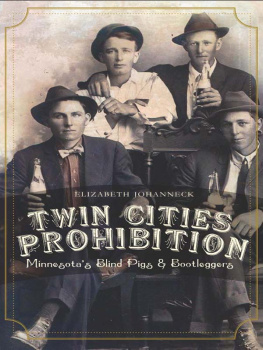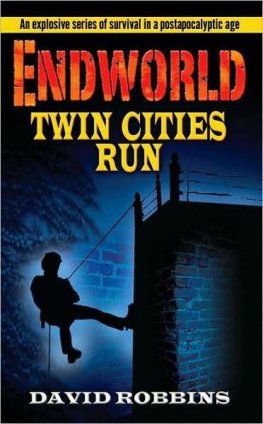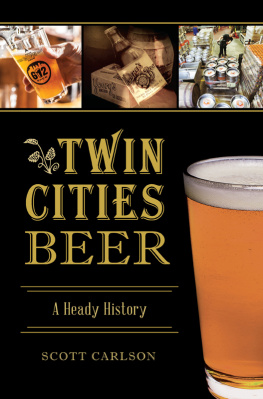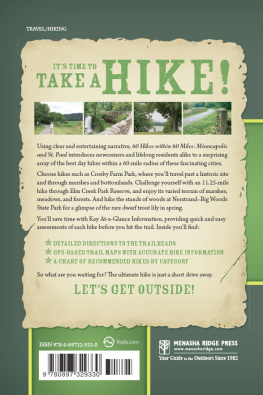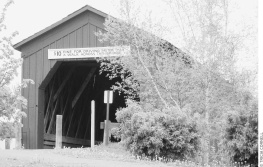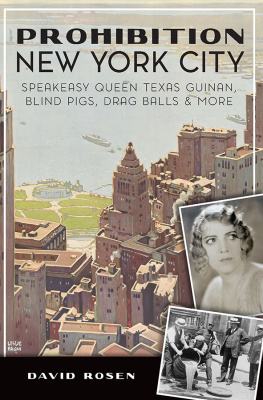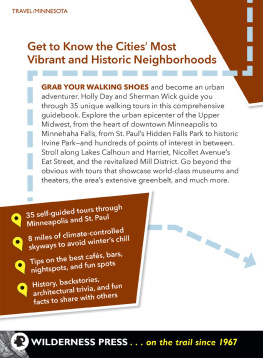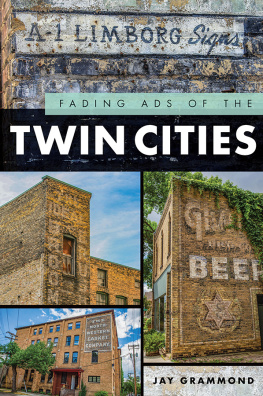

Published by The History Press
Charleston, SC 29403
www.historypress.net
Copyright 2011 by Elizabeth Johanneck
All rights reserved
Images are courtesy of the author unless otherwise noted.
First published 2011
e-book edition 2012
ISBN 978.1.61423.354.1
Library of Congress Cataloging-in-Publication Data
Johanneck, Elizabeth.
Twin cities prohibition : Minnesota blind pigs and bootleggers / Elizabeth Johanneck.
p. cm.
Includes bibliographical references and index.
print edition ISBN 978-1-60949-127-7
1. Prohibition--Minnesota--Saint Paul--History. 2. Prohibition--Minnesota--Minneapolis Metropolitan Area--History. 3. Crime--Minnesota--Saint Paul--History. 4. Crime--Minnesota--Minneapolis Metropolitan Area--History. I. Title.
HV5090.M6J64 2011
363.4109776579--dc22
2011012083
Notice: The information in this book is true and complete to the best of our knowledge. It is offered without guarantee on the part of the author or The History Press. The author and The History Press disclaim all liability in connection with the use of this book.
All rights reserved. No part of this book may be reproduced or transmitted in any form whatsoever without prior written permission from the publisher except in the case of brief quotations embodied in critical articles and reviews.
Dedicated in loving memory to
Ed Michael & my red-haired nephew, Andy Johanneck
CONTENTS
ACKNOWLEDGEMENTS
First and foremost, I must acknowledge my family, who offered me unlimited support. They include my lovely and talented mom, Marie, and my good-natured old dad, Lenus Johanneck, along with my siblings, Philip, Steve, Kevin, Bob, Jeff, Annie (Hammerschmidt), Pete and Danny, and their wonderful families. Along with them, I have received the support of my friends Cindy Bernardy Lavin and her husband, Bill, from Granite Falls, Minnesota. A special thank-you to my dear friend Monica Fischer for letting me use her story in the Women and Crime chapter.
My boss, Sarah Thapa, and our employer, Park Nicollet Methodist Hospital, once again agreed to make time for me to complete my book, and I am grateful for the consideration. I had the support of my co-workers, Kathy Lambert, Paul Lesnieswski, Shirley Sanon, Katie Nielson, Jenny Rux, Mark Skalsky, Annie Scott and Cassie Wold, who good-naturedly pitched in when extra help was needed.
My thanks go out to the management of the following businesses: the 5-8 Club, Foshay Tower (W Hotel Minneapolis), St. Paul Hotel, Phils Tara Hideaway, Breezy Point Lodge and Bootleggers Supper Club.
I am extremely grateful to Mark Evans for filling in the blanks of his grandfathers story and for agreeing to co-write his grandfathers chapter with me. Thank you to Gary Revier of Redwood Falls for providing photos and document images for my chapter about the Redwood Falls bank heist.
I am grateful to Melanie Dunlap and Penny Anderson for joining me on my adventures. And last but not least, I thank my children, Geoff and Kasey, and their significant others, Adriane (who provided the information about the liquor raid in New Ulm) and Shawn Johnson. I am grateful for grandsons Jojo and Jayvyn, to whom I have the opportunity to leave this modest legacy of my version of Minnesota history. Take what you like and leave the rest.
INTRODUCTION
There are, within the state of Minnesota, speakeasies and Prohibition-related historical sites that are still operating today as legitimate businesses. They are the inspiration for this book. Speakeasies, also referred to as blind pigs, were business establishments that served liquor without proper licenses when the sale of liquor was prohibited by the Eighteenth Amendmentthe Noble Experiment.
The 1920s and 30s in Minnesota are a fascinating time in history. Besides Prohibition, there was a friendly relationship between Canadian distillers and local gangsters and a style of law enforcement that tried to make the best of a bad situation through unconventional policies. Like in the rest of the country, our economy boomed and crashed like the percussion section of a junior high school band.
The era is commemorated culturally today in a variety of ways. The memory of Minnesotas Andrew J. Volstead from Granite Falls, who nurtured and guided the Eighteenth Amendment into law, is kept alive across the country. For instance, there is the Volstead Restaurant located at 125 East Fifty-fourth Street in New York City, which serves a tongue-in-cheek cocktail called Volstead Lemonade made with Ultimat vodka, fresh lemon, sugar and club soda. For lunch, one can dine on the Volstead Burger, an eight-ounce burger topped with lettuce and tomato, with the option of adding cheese, bacon and sauted onions. Im a little disappointed there isnt more to it than that, but then I suppose Volstead would have had a rather conservative diet.
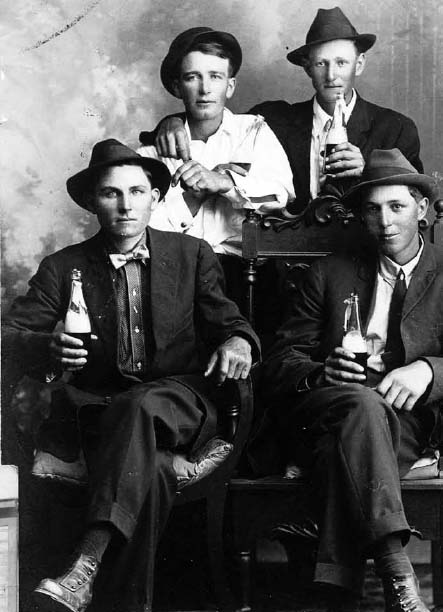
Minnesota men enjoying a beer. Photo courtesy of Monica Fischer, Wabasso, Minnesota.
Within this book, you will find a description of a number of former speakeasies in Minnesota that continue as legitimate businesses today. The idea of having refreshments in a vintage speakeasy appeals to certain types of dinersof whom I am one. There is a tiny perking up of the rebel in some of us, in much the same way the Prohibition era found some of the elite delighted to risk bumping elbows with the seedier class, covertly sneaking into back rooms and basements, only to brag about it behind their hands to friends the next day after church. Oh the thrill of being common!
Here in St. Paul, the Great Minnesota History Theater, founded by Lynn Lohr in 1981, has featured productions written by nationally recognized playwright Lance Belville revealing tales and folklore of the 1920s and 30s. Those plays include Scott and Zelda, a performance about Minnesota writer F. Scott Fitzgerald and his tortured wife, Zelda, an icon of the flapper era whose antics and literary success defined the Roaring Twenties. In much the same way our nation experienced the giddy heights of the 1920s and the devastating economic bust of the 1930s, Belvilles play documents the boom and bust of the Fitzgeralds, whose haphazard lives went up in flames fueled by alcoholism and madness.
Nina, Madam to the Saintly City, based on the real-life madam Nina Clifford, details the hypocrisy of the city of St. Paul promoting itself as a pillar of virtue while crooked cops and politicians were encouraging women to open candy stores serving children and then collecting graft from their backroom brothels. It was a tax, really, for conducting an illegal business within the city limits. Ninas was a real brothel, which served, among others, many of the citys finest decision makers and policy setters. There is a wonderful coffeehouse on the corner of Selby and Western Avenue in St. Paul that is named after the famous Nina. On the lower level, you will find Common Good Books, Garrison Keillors bookstore, promoting many of Minnesotas writers.
During the process of pulling together the events that constituted our states Prohibition era, I discovered stunning similarities to the economic and social events taking place today. The parallels are unmistakable, and though you may not see the connection at the beginning of this book, I trust that by the end you will.
Next page
